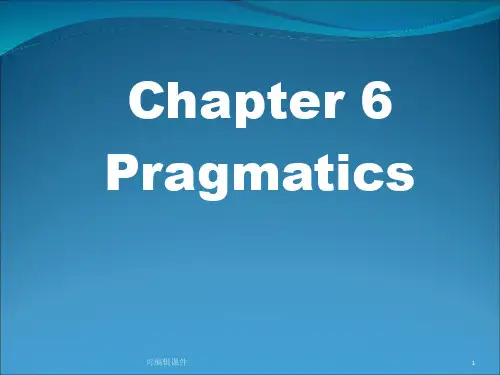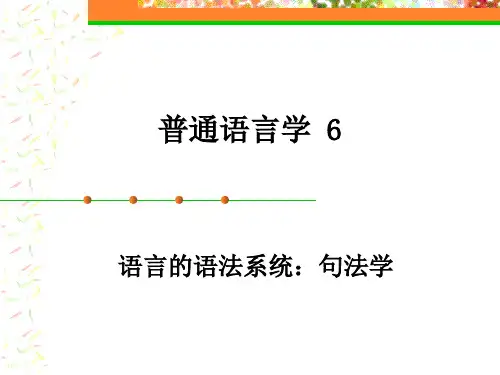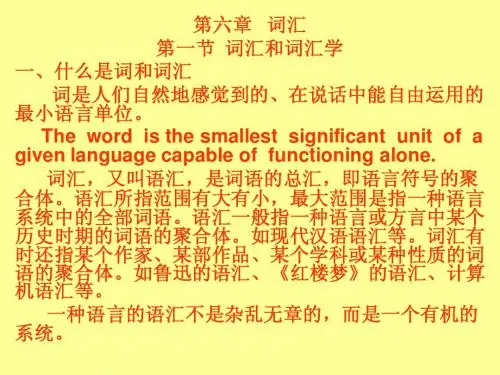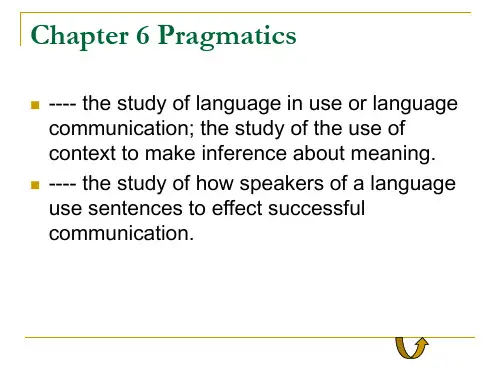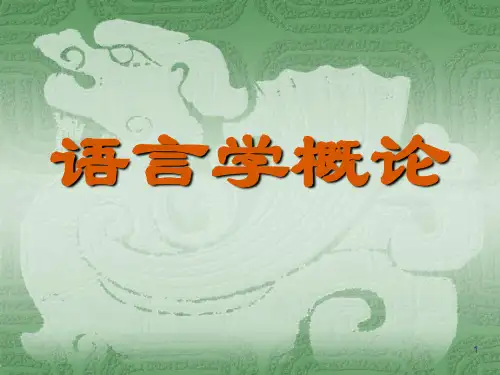语言学6PPT课件
- 格式:ppt
- 大小:1.15 MB
- 文档页数:8

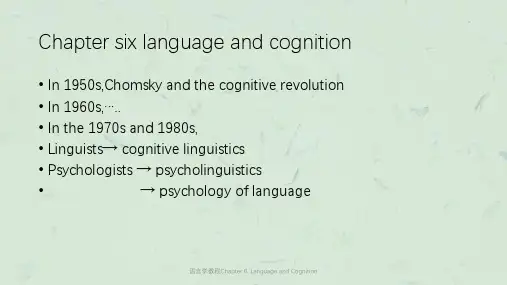
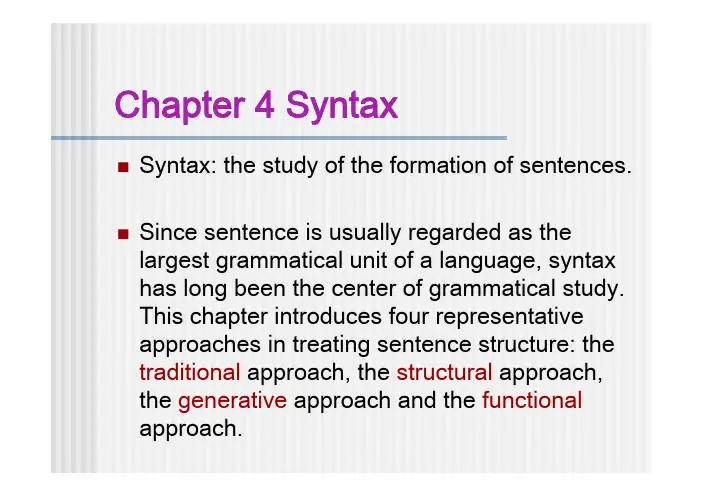
Chapter 4 SyntaxSyntax: the study of the formation of sentences. Since sentence is usually regarded as the largest grammatical unit of a language, syntax has long been the center of grammatical study. This chapter introduces four representative approaches in treating sentence structure: the traditional approach, the structural approach, the generative approach and the functional approach.4.1 The traditional approach4.1.1 Number, gender and caseNumber: singular and pluralCase:1)Pronouns: nominative(I, he, she), accusative(me, him,her), genetive(my, your, his)2)Nouns: general(John, boy), genitive(John’s, boys’)4.1.2 Tense and aspectTenses: past and presentAspect: perfective(perfect) and progressive(continuous)4.1.3 Concord and governmentConcord(Agreement) is the requirement that the forms of two or more words in a syntactic relationship should agree with each other in terms of some categories. Eg. this man, these men; a book, some booksGovernment is another type of control the form of some words by other words in certain syntactic constructions. It differs from concord in that this is a relationship in which a word of a certain class determines the form of others in terms of certain category.Eg. She gave him a book. She gave a book to him.4.2 The structural approach4.2.1 Syntagmatic and paradigmatic relations (Saussure) -Signified(concept) and signifier (sound image)-Syntagmatic relation(structure, horizontal relation,chain relation):the relation between one item and others in a sequence-Paradigmatic relation(system, vertical relation, choicerelation): the relation between elements replaceable with each other at a particular place in a structure, or between one element present and the others absent.4.2.2 Immediate constituent analysis(IC analysis)-construction and constituents(Bloomfield)-immediate constituents-ultimate constituents-IC analysis:the analysis of a sentence in terms of its immediate constituents---word groups (or phrases), which are in turn analyzed into the immediate constituents of their own, and the process goes on until the ultimate constituents are reached.ex.1 (a) ( ( Poor) (John) ) ( ( ran) ( away) )(b) Poor John ran awayex.2 John left yesterdayex.3 dis place mentAdvantage:Through IC analysis, the internal structure of a sentence may be demonstrated clearly, and ambiguities will be revealed.Ex. 1.(a) Leave the book on the shelf(b) Leave the book on the shelf(b) my small child’s cot(c) my small child’s cotEx.3(a) The son of Pharaoh’s daughter is the daughter of Pharaoh’s son(b) The son of Pharaoh’s daughter is the daughter of Pharaoh’s sonEx.4(Labelled tree diagram)more expensive clothes more expensive clothes Adj Adj N Adv Adj NNP APNP NPEx.5(Is he really) that kind? (Is he really) that kind?Det N Adv AdjNP APEX.6They can fish herePron Aux V AdvPron V N Adv-Problems:1) Binary division ? Old men and women2) Discontinuous constituents ? make it up4.2.3 Endocentric and exocentric constructions-Endocentric construction(headed construction) is a construction whose distribution isfunctionally equivalent, or approachingequivalence, to one of its constituents, whichserve as the center/head of the whole.e.g. poor John, the three small children1) Subordinate construction:only one head (e.g.really very late, the book on the shelf, walked away immediately)2) Coordinate construction:more than one head(e.g.boys and girls, coffee or tea, the city Rome)-Exocentric construction is a construction whose distribution is not functionally equivalent to any of its constituents.e.g.Prepositional phrases :on the shelf, if he is goingBasic sentences :The girl smiled.? Verb plus object constructions :visit Bill, read books。

